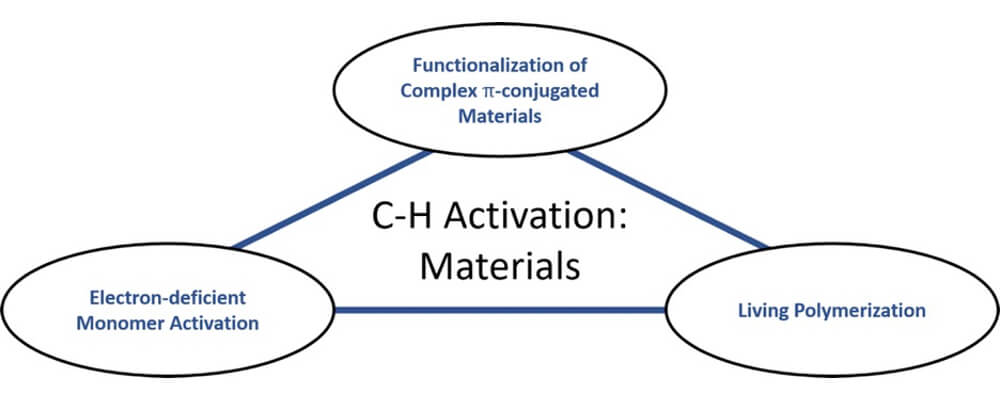Recent Developments in C–H Activation for Materials Science in the Center for Selective C–H Activation
Junxiang Zhang, Lauren J. Kang, Timothy C. Parker, Simon B. Blakey, Christine K. Luscombe and Seth R. Marder
Molecules
2018, 23(4), 922; DOI:10.3390/molecules23040922

04/2018
Organic electronics is a rapidly growing field driven in large part by the synthesis of π-conjugated molecules and polymers. Traditional aryl cross-coupling reactions such as the Stille and Suzuki have been used extensively in the synthesis of π-conjugated molecules and polymers, but the synthesis of intermediates necessary for traditional cross-couplings can include multiple steps with toxic and hazardous reagents. Direct arylation through C–H bond activation has the potential to reduce the number of steps and hazards while being more atom-economical.
In this short review, the work performed by the materials team within the Center for Selective C–H Functionalization (CCHF) is summarized. Specifically, work towards achieving direct arylation of difficult-to-functionalize electron acceptor intermediates and living polymerization of π-conjugated polymers through C–H activation is described.